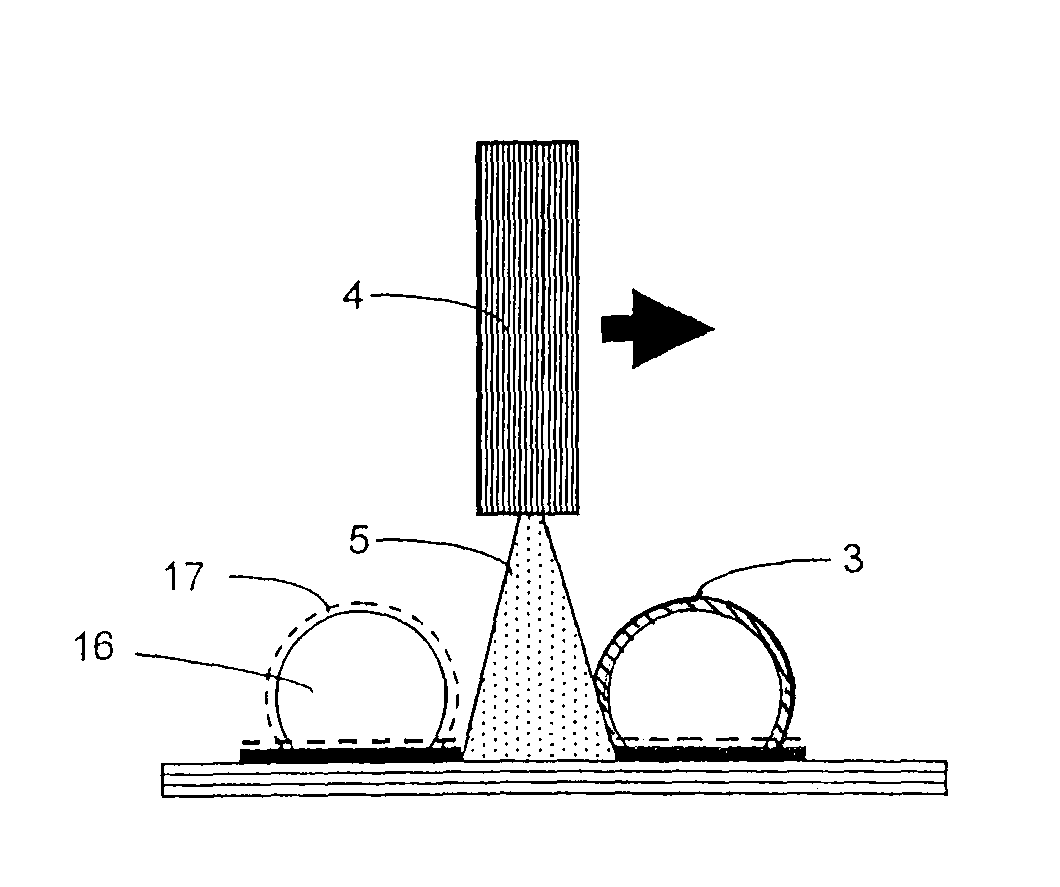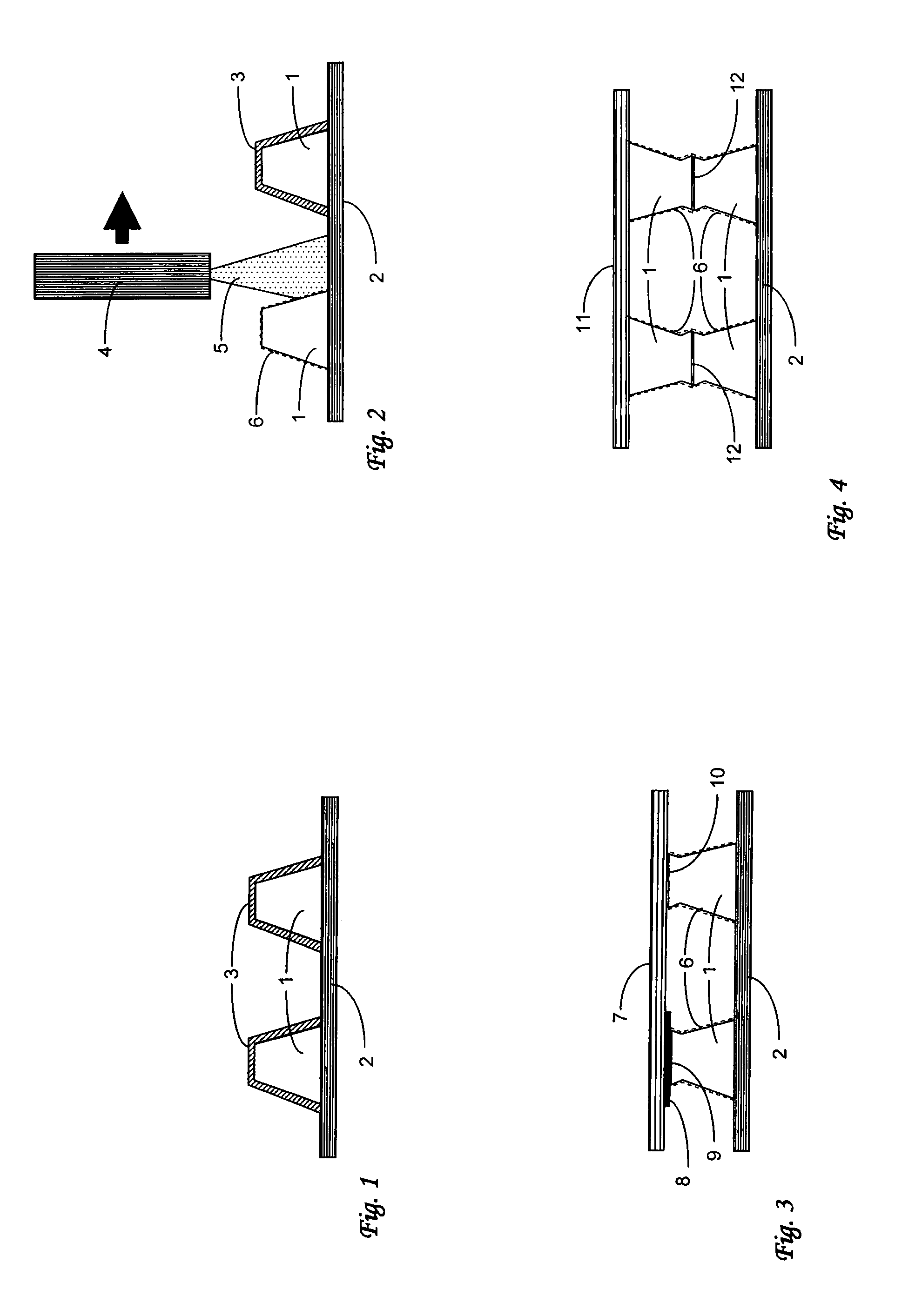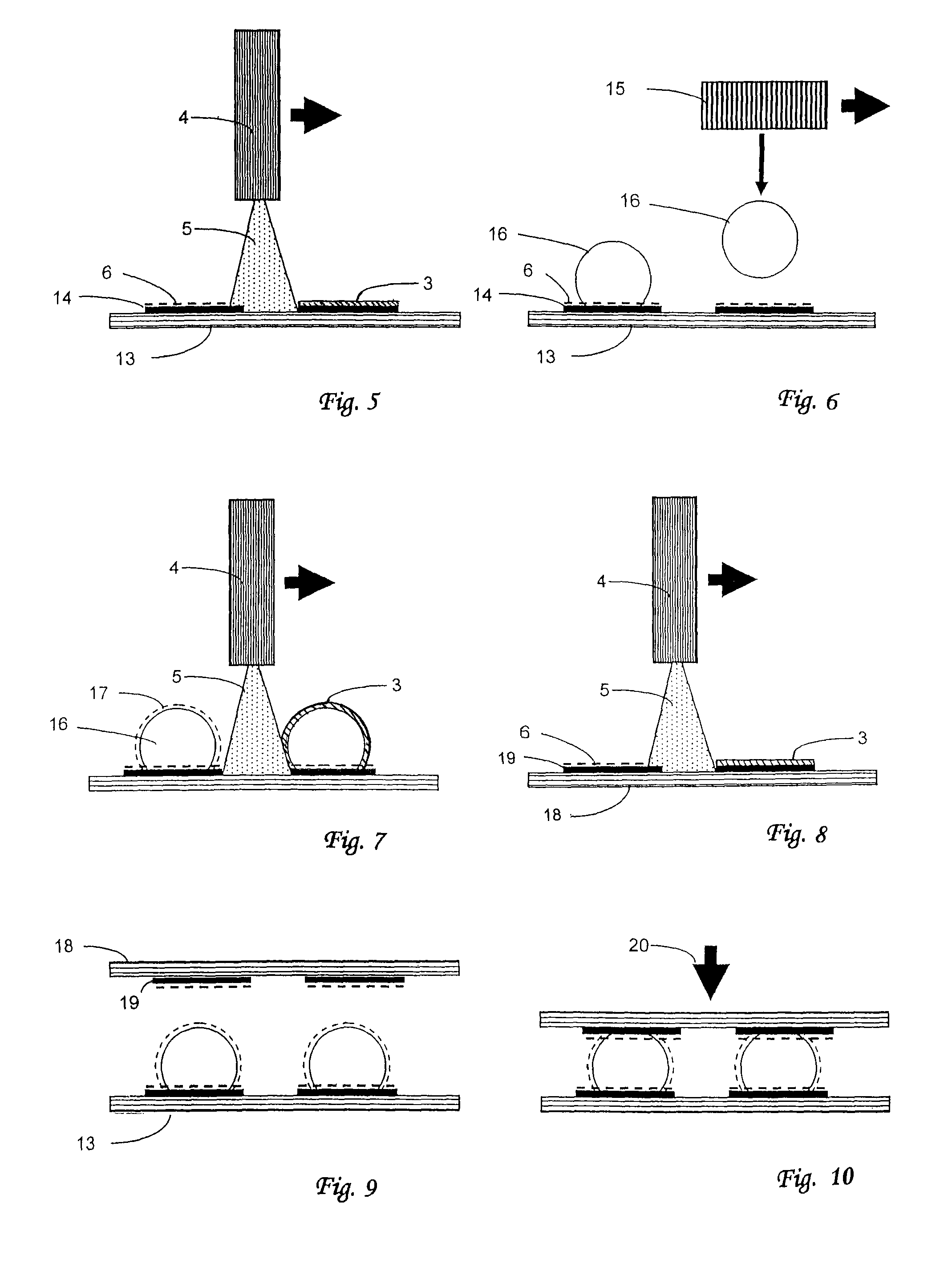Method of plasma preparation of metallic contacts to enhance mechanical and electrical integrity of subsequent interconnect bonds
a technology of interconnection bonding and metallic contact, which is applied in the field of surface preparation of metallic contact, can solve the problems of chemical and its subsequent disposal cost, reliability problems, and liquid-borne or airborne contamination of devices, and achieve the effects of not damage sensitive electronic circuits or components, inhibiting further oxidation, and quick drying
- Summary
- Abstract
- Description
- Claims
- Application Information
AI Technical Summary
Benefits of technology
Problems solved by technology
Method used
Image
Examples
Embodiment Construction
[0022]The present invention relates to a method for preparing and bonding surfaces, such as metallic contacts, by the sequential or concurrent application of a reducing agent and a passivation agent to remove an oxidation layer from the surfaces and then generate a passivated layer on the surfaces to prevent the subsequent formation of oxides on the surfaces. For purposes of the present invention and the following descriptions of the invention, an “agent”, such as a reducing agent or a passivation agent, is defined as a member, or species, of one or more groups, or genuses, of elements, chemicals or chemical compounds or mixtures thereof in a gaseous form suitable for application to the surfaces to be treated and providing the desired effect on the surfaces to be treated, such as the removal of oxides from the surfaces or the passivation of the surfaces to prevent the subsequent formation of oxides thereon.
[0023]FIG. 1 shows an array of metallic contacts 1 situated on a substrate 2....
PUM
| Property | Measurement | Unit |
|---|---|---|
| temperature | aaaaa | aaaaa |
| temperature | aaaaa | aaaaa |
| power | aaaaa | aaaaa |
Abstract
Description
Claims
Application Information
 Login to View More
Login to View More - R&D
- Intellectual Property
- Life Sciences
- Materials
- Tech Scout
- Unparalleled Data Quality
- Higher Quality Content
- 60% Fewer Hallucinations
Browse by: Latest US Patents, China's latest patents, Technical Efficacy Thesaurus, Application Domain, Technology Topic, Popular Technical Reports.
© 2025 PatSnap. All rights reserved.Legal|Privacy policy|Modern Slavery Act Transparency Statement|Sitemap|About US| Contact US: help@patsnap.com



